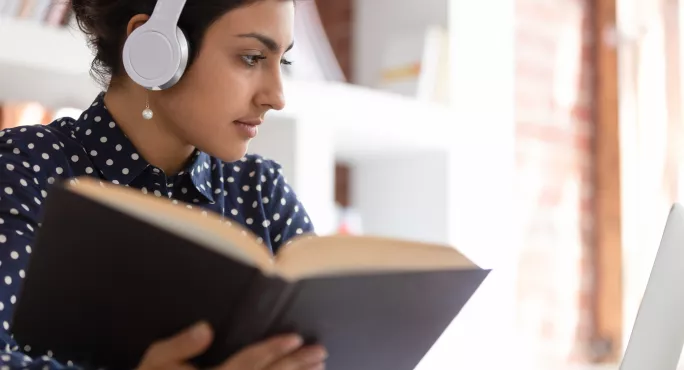They stood in my doorway, lips pouted, heads bowed, eyebrows furrowed.
Eventually they raised their hands to bid me a momentary farewell.
Not a word was exchanged, but we knew what was happening. It was inevitable.
Quick read: Are we getting resilience wrong in schools?
Quick listen: We need to level up our understanding of video games
Want to know more? Why schools should teach pupils how to lie
The students in my doorway felt compelled to stop and listen to the closing bars of Karma Police by Radiohead, which I had earlier paired with an excerpt from Fahrenheit 451 by Ray Bradbury.
The dystopian ideas in both were an ideal match, each complementing the other’s sense of uneasiness and uncertainty.
I’d always played music in my classroom, but now I was finding a way to use it to engage students in a creative way, and also remind them of what they had learned.
Finding perfect partners
Since pairing these works, I have seen students experience profound and creative realisations, and reconsider how they define self-expression and artistic ingenuity.
This has not only had a positive impact on their personal lives, but has been reflected in improved literary analysis and a willingness to engage in discussions and debates within a class setting.
Depending on the class you teach, there are different levels on which you can pair music with a text.
Here are three ideas that have worked well for me:
Chorus
Find a song that has a chorus that relates to current class content.
Students will enter the class, settle themselves, listen for a few things, and connect it back to the relevant tasks in that class.
For example: Listen to Strange Brew by Cream when reviewing the witches’ role in Macbeth and their incantation.
Verse and chorus
Find a song that has verse-lyrics and a chorus that relate to current class content.
This is a bit more complicated, as it requires student engagement and reflection as they step in the door, and they will be expected to think more critically about what they’re hearing and consider the work they’ve produced or reviewed.
For example: Listen to The Times They Are A-Changin by Bob Dylan when reading 100 Years of Solitude by Gabriel Garcia Marquez, with discussions relating to personal and societal changes over time.
Explore an artist
Find a song and an artist, whose creative work and personal history parallels that of the current class content.
Students must think critically in order to draw comparisons between what they’re hearing and the work they’ve produced or reviewed.
This can be especially intriguing for students if the song or artist and class content seem highly unrelated, but in reality share many similarities.
For example: Listen to I Used to love H.E.R. by Common when reading The Old Man and The Sea by Ernest Hemingway. In both works, the protagonists perceive the driving forces in their lives as mysterious, beautiful, and incomparable women.
This personification for Common was “hip-hop”, and for Santiago in Hemingway’s novella it was the sea, or “la mar” (using the Spanish feminine).
Of course you’ll know your students best, so try to meet them closer to where their musical interests might lie, and go from there.
This is not only an opportunity to bring different energy and insight into your classroom and curriculum, but to further connect with your students in a different and creative way.
Michael McNeill-Martinez is IB theory of knowledge lead and secondary English teacher at Rome International School
